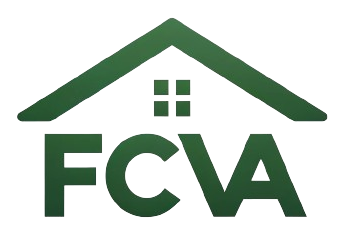What To Disclose About Prior Damage When Selling As Is
Have you ever wondered how much you should reveal about your home’s prior damage when you’re in the process of selling it as is? It’s a tricky situation that many homeowners find themselves in, often feeling unsure about what details to share. We get it—navigating the nuances of real estate can sometimes feel like walking through a minefield. But the good news is that with a little guidance, you can make informed decisions that will help your sale go smoothly.
Understanding the ‘As Is’ Sale
An ‘as is’ sale means you’re selling your property in its current condition, without committing to any repairs or enhancements. This approach can attract buyers who are looking for a bargain or a fixer-upper, but it raises important questions regarding disclosure.
When you sell your home as is, it’s important to realize that buyers will generally still have expectations about the condition of the property. They want an honest picture of what they’re getting into, and that includes any prior damage your home has sustained.
The Legal Landscape of Home Disclosure
In most states, laws require sellers to disclose material defects or issues that could affect a buyer’s decision. This means that even in an as-is sale, you must be forthcoming about significant problems.
What Constitutes a Material Defect?
A material defect is something that affects the property’s value or safety. Examples include:
- Structural issues (like foundation problems)
- Plumbing or electrical system failures
- Prior water damage or mold issues
- Pest infestations
It’s essential to recognize that withholding information about these types of problems can lead to legal repercussions down the line. So, being open and transparent isn’t just a good practice—it’s also a wise strategy legally.
Common Types of Prior Damage to Disclose
When selling as is, you should be prepared to talk about several common types of prior damage. Here’s a breakdown to help you navigate this process:
1. Water Damage
Water damage can be a significant concern for potential buyers. Whether it’s resulted from a leaky roof, burst pipes, or flooding, you should disclose any history of water intrusion, including:
- Areas of visible water damage
- Signs of mold or mildew
- Repairs made, if any, following water damage incidents
It’s always better to be upfront about these issues. Doing so inspires trust and avoids potential disputes in the future.
2. Fire Damage
If any parts of your home have suffered from fire damage, it’s necessary to disclose this information. Potential buyers will be curious about:
- The extent of the damage (was it limited to a small area or more widespread?)
- What repairs you made or improvements undertaken
- Any lingering concerns, such as smoke damage or compromised structural integrity
3. Roof Issues
A strong roof is critical for home integrity. If your roof has previously sustained damage—whether from storms, age-related wear, or other factors—you should document and disclose:
- The age of the roof
- Any repairs or replacements done
- Ongoing issues like leaks or missing shingles
Disclosures and Seller’s Disclosure Statement
While state laws vary, most require a seller’s disclosure statement, which is your chance to be clear about your home’s condition. Here’s what you should know:
What to Include in Your Disclosure Statement
When drafting your disclosure statement, include both the negatives and the positives. This honest approach deepens buyers’ trust. Here’s a simple breakdown of necessary sections:
| Section | Details to Include |
|---|---|
| Property Condition | Overall condition of the property |
| Repairs and Upgrades | Past repairs, ongoing issues, and upgrades made |
| Major Systems | Status of major systems (HVAC, plumbing, electrical) |
| Compliance Issues | Any issues with local codes or ordinances |
Consider this as your opportunity to not only fulfill legal requirements but also to showcase your transparency to potential buyers.
Addressing Potential Buyer Concerns
Once you’ve disclosed prior damage, it’s likely that buyers might have concerns. Addressing them calmly and efficiently can alleviate worry. Be prepared to provide:
Repair Documentation
If you had significant repairs undertaken, gather and share any documentation you have. This can include:
- Receipts from contractors or service providers
- Photographs taken during and after repairs
- Warranties on any repaired or replaced items
Showing that you took action can reassure buyers that they won’t face those issues again.
Recommended Inspections
Encourage buyers to have their inspections. While you are selling as is, having a professional inspection can offer further assurances regarding the property’s condition. A thorough inspection can sometimes reveal issues you might not have noticed or previously documented.
The Importance of Being Honest
While it’s tempting to downplay prior damage, honesty is really your best policy. It not only protects you legally but also fosters goodwill with prospective buyers, which can be crucial for a smooth transaction.
Building Trust with Prospective Buyers
Being forthright can turn a potential drawback into an asset. If buyers see that you’re open to discussing the property’s history, they may feel more confident in proceeding with the sale. This trust can set the tone for negotiation and lead to a higher likelihood of closing the deal.
Thinking About Your Next Steps
Once you’ve addressed disclosures, it’s also helpful to think about how this will impact the rest of your selling process.
Setting a Competitive As Is Price
Determine a fair market value, taking into account the prior damage you disclosed. Look at comparable sales in your area that might have similar issues to gauge the right price.
Considering Cash Offers
A cash offer can often be presented quickly and might be more attractive to you if you’re selling as is. Cash buyers are less likely to request repairs or renegotiate based on inspection reports. You might want to consider reaching out to companies like FastCashVA.com, who specialize in quickly and fairly purchasing homes in any condition.
Planning for Potential Negotiations
Expect negotiations around the price in light of the disclosures. Be open to discussions, understanding that buyers may want to request a lower price due to the disclosed issues. Prepare yourself to respond to offers thoughtfully, considering both your financial needs and the integrity of your property’s condition.
Conclusion: Moving Forward with Confidence
Selling your home as is can feel overwhelming, particularly when you’re faced with the need to disclose prior damage. However, understanding your obligations, being transparent, and effectively communicating with potential buyers can make a significant difference in your selling experience.
You have the advantages of a straightforward process and the possibility of a quicker sale, even if there’s damage to address. By protecting yourself through proper disclosures and working with trusted resources, you can successfully navigate the selling landscape and move forward to your next chapter.
Ultimately, remember that knowledge and clarity bring confidence. Ensure you’re equipped with the right information, and your home-selling journey can be a positive one. The selling signs may go up soon, but with what you’ve learned here, those signs may just come down quickly as well!
Ready to sell your house fast in Virginia? FastCashVA makes it simple, fast, and hassle-free.
Get your cash offer now or contact us today to learn how we can help you sell your house as-is for cash!
Disclosure: As an Amazon Associate, I earn from qualifying purchases.



